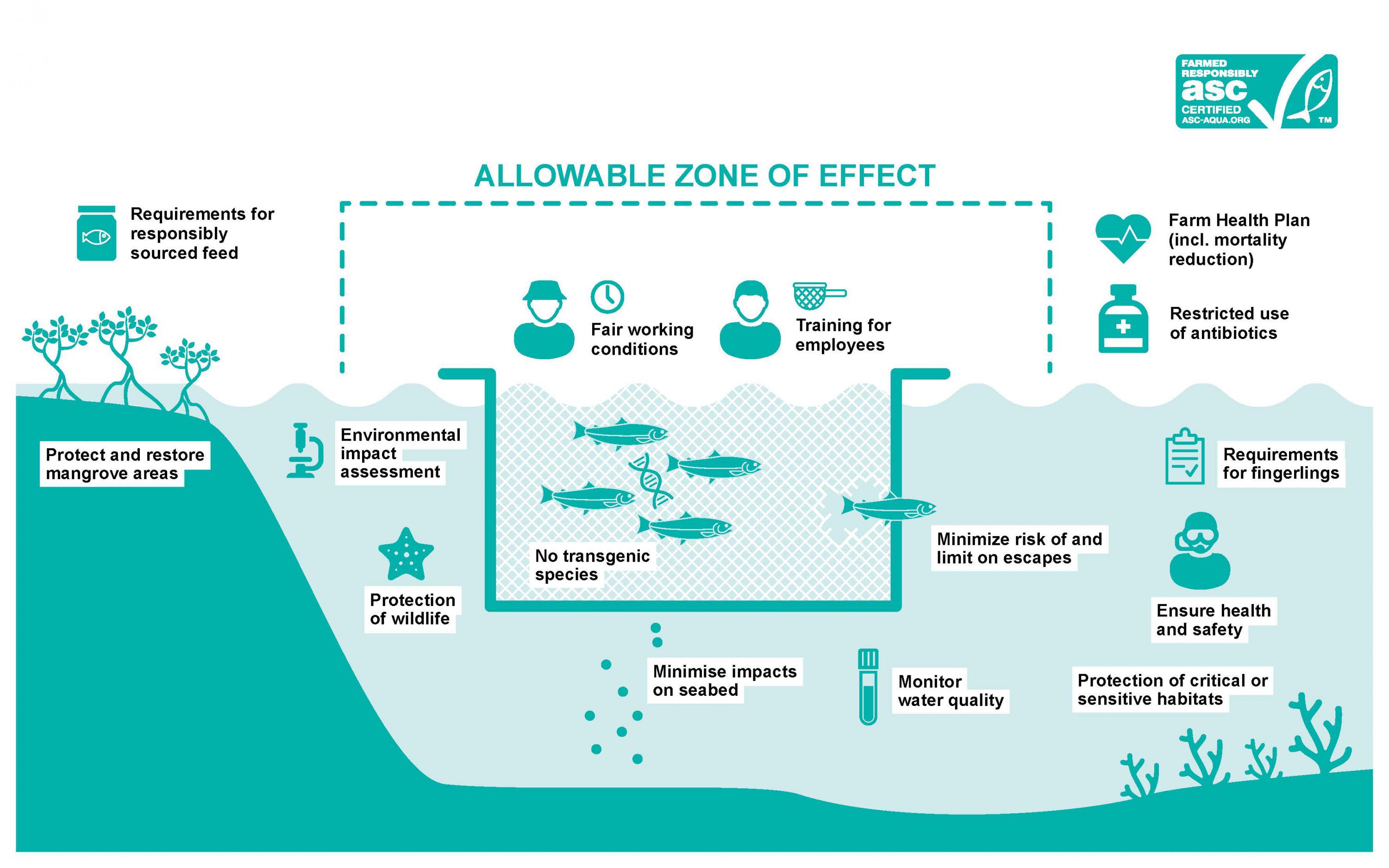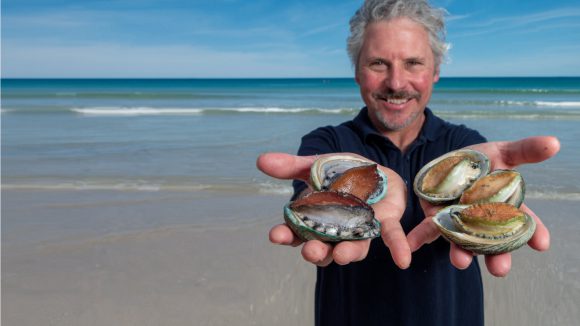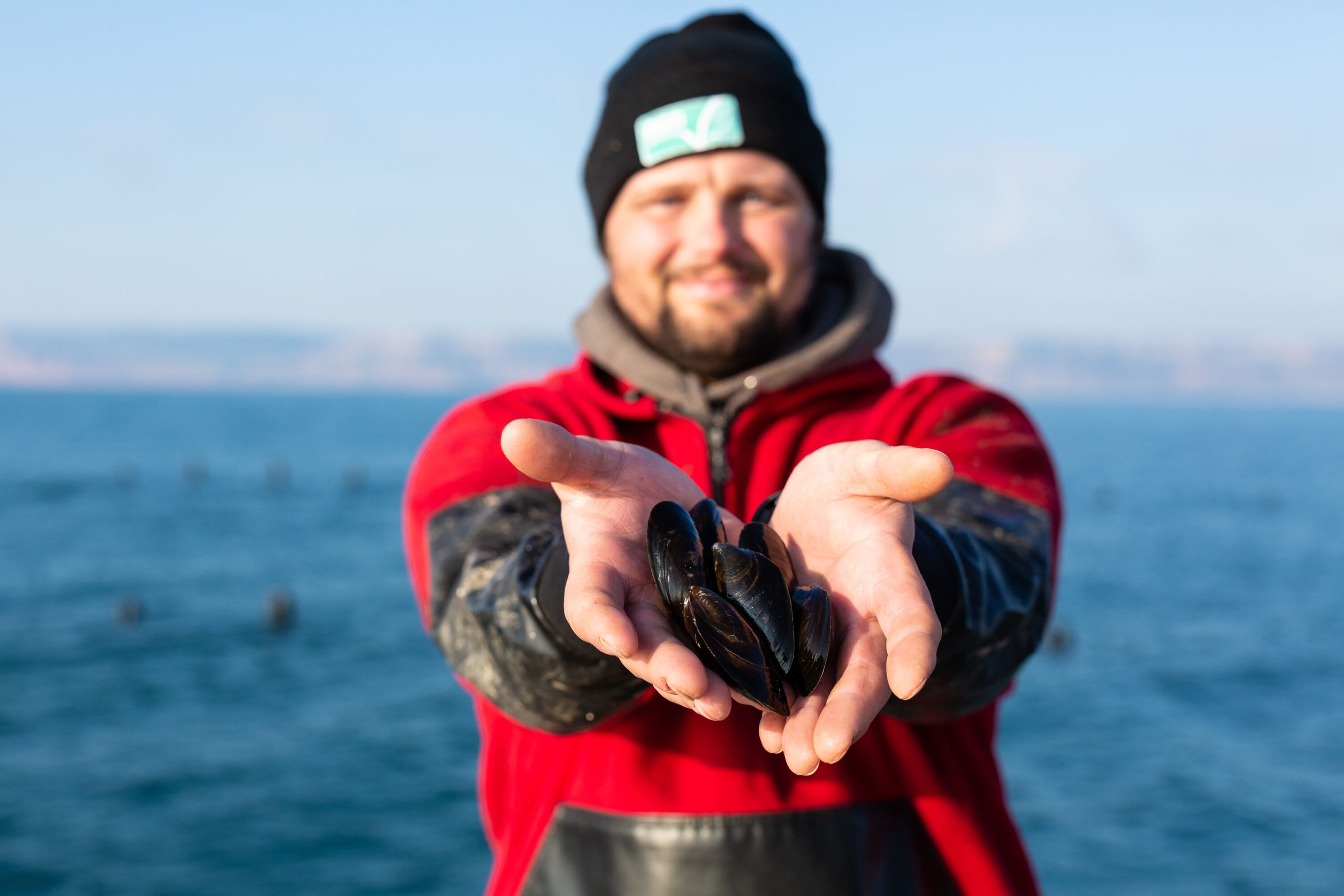
Environmental impact of aquaculture
It has never been clearer just how urgent it is for humanity to find a balance between the needs of our societies and the protection of our environment and wildlife.
The way we produce our food can have a big impact on the wildlife we share the planet with. Of course, all food production has environmental and social impacts; producing food is an interaction with nature, and one which must therefore leave a trace. But these impacts can be mitigated and reduced with responsible practices.
In oceans and on land, all aquaculture farms operate within existing ecosystems.
Ecosystems are geographic areas with distinct living organisms, physical features, bio-chemical processes, weather, other natural phenomena and human activities, all of which interact to create a complex balance of life.
Because ecosystems are interrelated and are generally self-sustaining, any persistent and harmful interference can tip the balance of the ecosystem, putting its ability to support natural life and people living within it, at risk.
During ASC certification, a wide range of data is collected and analysed about current ecosystem health, from multiple sources and stakeholders. This helps to predict the future state of an ecosystem and inform different management strategies to minimise a farm’s negative impact and assist in protecting, improving and restoring the health of an ecosystem.
Ecosystem analysis and assessment
The collection of the data and the assessment of a farm’s environmental impact is carried out by independent experts. All the data is made publicly available, to enable stakeholders to build a shared awareness that meets their needs.
Ensuring that local ecosystems remain healthy, requires sufficient and relevant information to be collected, including on-site information, so that a science-based assessment can be made on the state of that particular ecosystem and the impact of the farm.
ASC’s standards are comprehensive and stringent in their requirements to ensure that natural habitats and local biodiversity are protected and improved where necessary. They currently cover more than 100 criteria including:
- Allowable Zone of Effect (AZE)
- Impact on seabeds
- Protection of critical or sensitive habitats
- Water quality
- Mangrove restoration
Examples of how the ASC standards help protect, improve and restore ecosystems

Allowable zone of effect (AZE)
Some environmental impact is to be expected from aquaculture, but an allowable zone of effect (AZE) is used to place a strict boundary on the environmental footprint of a farm – beyond the boundary of an AZE, no measurable impacts on the seabed or water from farm activity are permitted.
Salmon farming using sea cages is an example of where an AZE is required. Sea cage farming is associated with a number of potential environmental impacts. For example, nutrients such as phosphorus and nitrogen released into the water through fish excretion and from the breakdown of excess feed, may lead to harmful levels in the water and give rise to blooms of algal growth.
The ASC Salmon Standard requires a very strict AZE to be in place that sets a maximum environmental footprint and requires water sampling, both inside and outside the AZE, to monitor dissolved nutrients around farms. In all cases, AZEs are defined using credible and robust modelling systems that include stringent analysis to determine where depositions of particles occur.
Restoring lost mangrove forest
Mangrove forests are among the world’s most productive ecosystems and are important carbon sinks. It is estimated that global losses of mangrove habitat is in the order of 40‐50% with 10‐38% lost to shrimp aquaculture. The ASC forbids the siting of shrimp farms in mangrove ecosystems; and for those already built prior to the 1999 Ramsar resolution, the ASC requires that the farm must rehabilitate 50% of the area affected. Any mangrove removal must be compensated by allowing the natural regrowth or reforestation in an equivalent area, using indigenous species adapted to the specific conditions of the farm site. Any area that has been reforested must include 80% of tree species that were in the original communities. Removal of natural wetlands must also be compensated by creating areas that possess similar ecological characteristics.
Support responsible farmers: Look for the logo!
If, like us, you want to only shop and eat seafood products that have been produced with care by farms taking responsible care of the environment they operate in, simply look out for the ASC logo when you shop and eat out. And if it’s not there – ask why not!
Explore More

Learn more about Seafood Farming
Find out how farmed seafood can help feed a growing global population, why fish farming needs to be done responsibly and how you can make a responsible choice.

Visit our Blog
Find out what’s behind the label, what’s going on in the world of aquaculture and how the Aquaculture Stewardship Council is updating and improving its programmes regularly.

The Aquaculture Stewardship Council
We run the world’s leading certification programme for responsibly farmed seafood. Learn about our Certification Programmes and our Impact.



